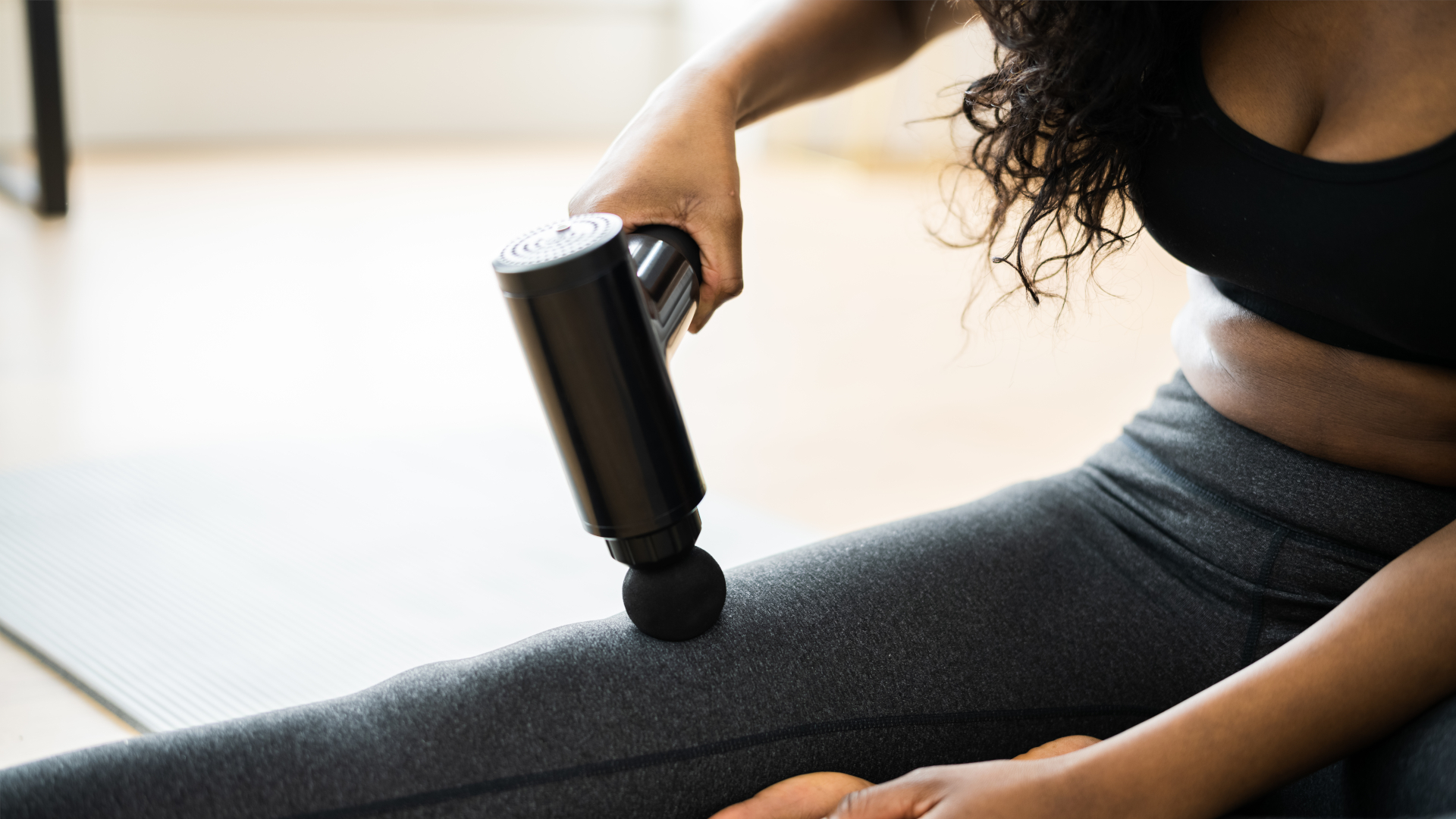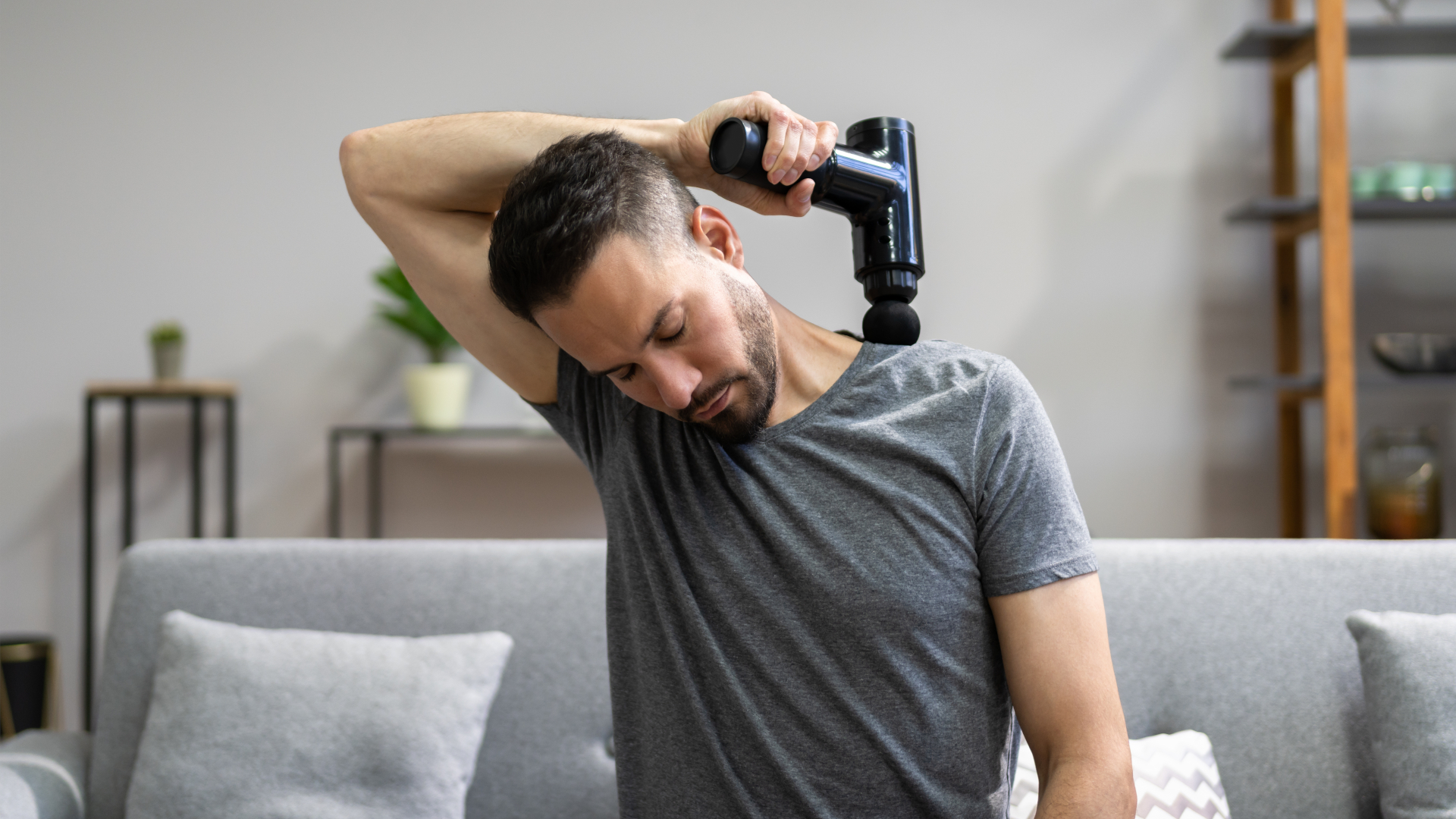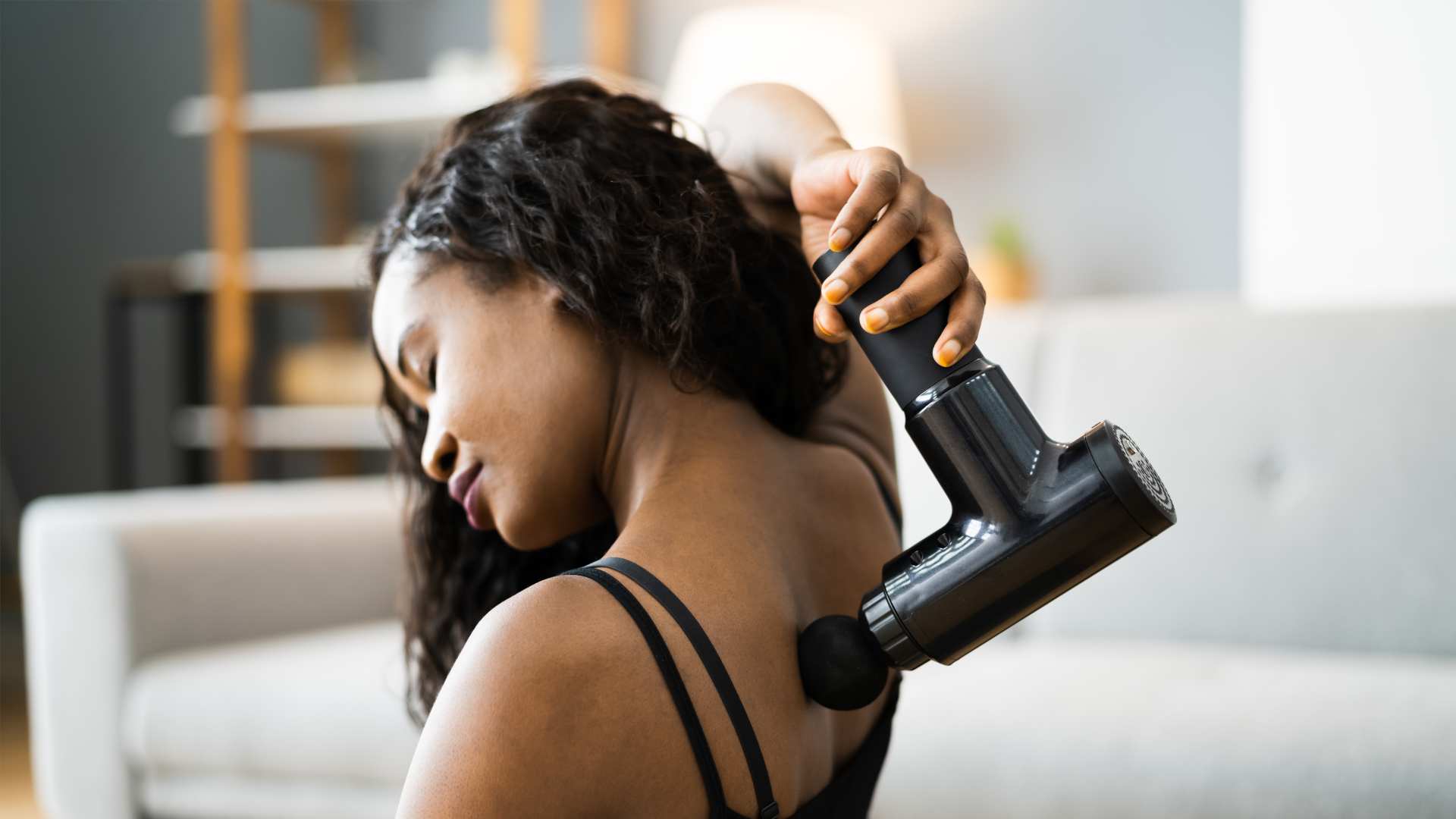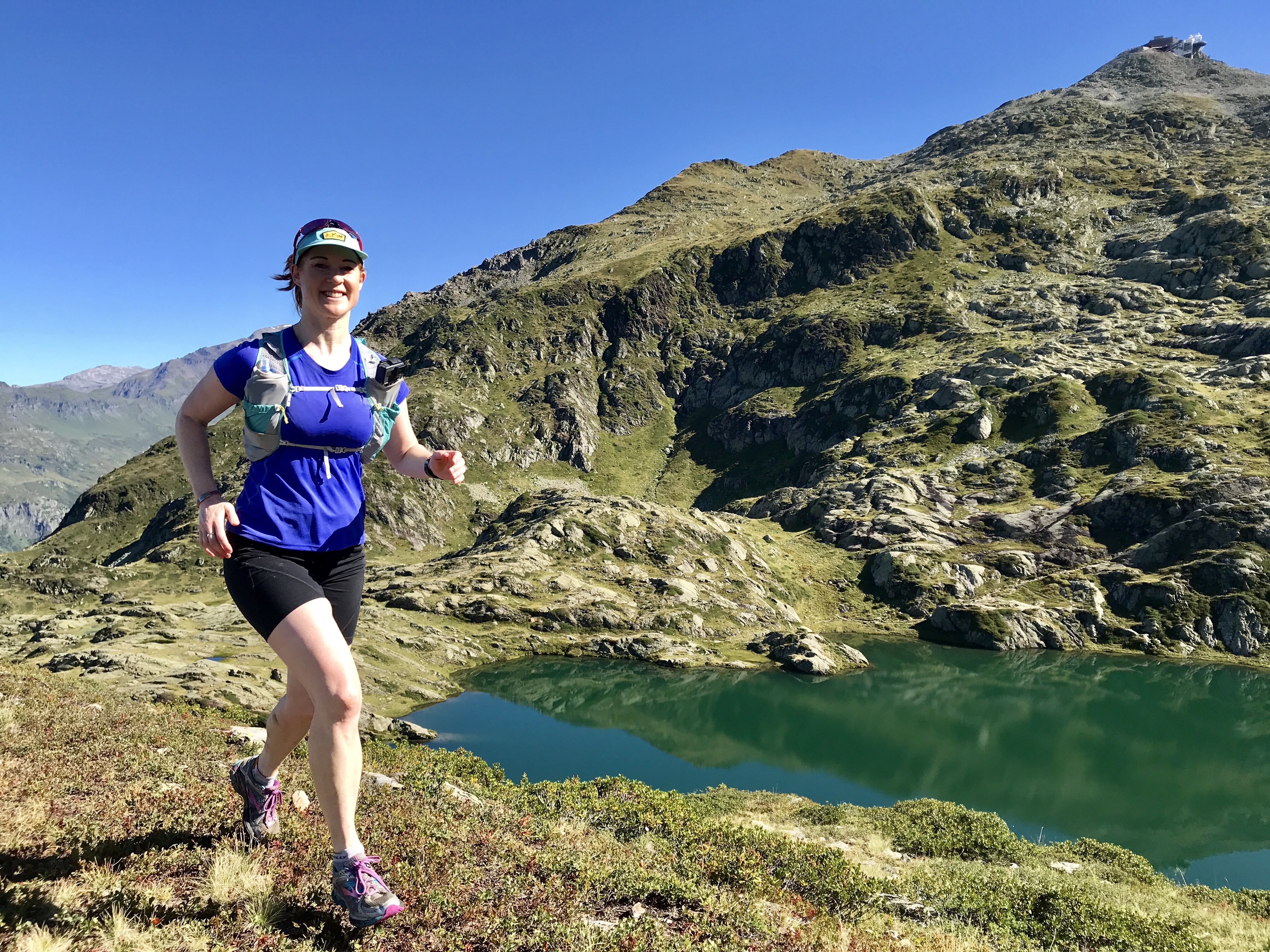What is a massage gun? The lowdown on this tool in a runner’s recovery arsenal
We explain what a massage gun is and how it can be useful for runners

It looks like a cross between a drill and a hairdryer with a sound to match, but what is a massage gun, and why might you need one as a runner?
In short, a massage gun is a small, rechargeable, handheld device that you press against your tired or tight muscles to encourage them to repair quicker.
They may come with different attachment heads to target different areas of the body. Most common is a ball about the size of a snooker ball suitable for large muscle groups like the thighs, but you can also get double headed prongs for the neck and spine, curved ends for foot soles and trigger points, and many more.
Massage guns usually have a variety of different speeds of what’s known as vibration and/or the deeper percussion therapy, whereby the gun head vibrates or moves very quickly back and forth to pummel the target area.

How do massage guns work?
Massage guns help to promote blood flow, just like foam rollers, balls and massage itself. Walking, light cycling, stretching and yoga also promote blood flow and recovery. Basically whenever you move about or use recovery tools like massage guns, you are helping your body flush out waste products, transport nutrients for rebuilding and repair and reduce tightness, inflammation and DOMS (Delayed Onset Muscle Soreness).
For example, if you are prone to tight calf muscles after long runs, you can use the massage gun to ease them, first on a low setting and getting progressively faster or deeper as the muscle warms up. If you start to feel pain at any time you should ease off immediately, press less hard into the muscle and turn down the intensity of the massage gun. Stop if the pain continues.

Do massage guns really work?
Massage guns have become really popular with both regular and elite athletes in recent years because they make it very easy to massage a large group of muscles in minutes without the cost and time taken to go for a traditional massage, and without the effort it takes to roll yourself back and forth across a foam roller. Some physiotherapists also use them on themselves and as part of their client treatment plans. But do massage guns really work? Are they worth the hype?
Advnture Newsletter
All the latest inspiration, tips and guides to help you plan your next Advnture!
Unfortunately research hasn’t yet proven conclusively how effective massage guns are. Moreover, as with any recovery tool, if used too harshly or incorrectly they have the potential to cause more harm than good if you go to town on an injured area and ignore the pain caused.
However it is true that when used correctly massage guns help encourage blood flow to whichever tired muscles you use them on, potentially aiding recovery in a similar way that a foam roller, rolling ball or a massage would.

Is it worth buying a massage gun?
If you’d like an easy, relatively quick and often cost effective (depending on model) way to promote muscular recovery after a long or hard run, a massage gun is definitely worth thinking about adding to your recovery tool arsenal.
They can be cheaper and more time-efficient than a real life massage, however a professionally trained therapist will be able to give your body exactly what it needs (and shouldn’t injure you further) compared to your amateur prodding, which is why it costs more.
You can also create a similar recovery effect in many other easy and good value ways, like using a foam roller, a tennis ball and gentle activities like walking, cycling, stretching and yoga.
In short, massage guns are not vital but they can be a fun and effective way to promote recovery from running if used correctly.
The co-founder and former editor of Trail Running magazine, Claire now runs the YouTube channel Wild Ginger Running, creating films about trail- and ultra-running advice, inspiration, races and gear reviews. An award-winning journalist, writing for outdoor and adventure sports magazines and websites, Claire's first book, The Ultimate Trail Running Handbook (5k to 50k), is out now. Her second, The Ultimate Ultra Running Handbook (50k to 100 miles), is out Autumn 2024. Claire also speaks and presents at events and races.

